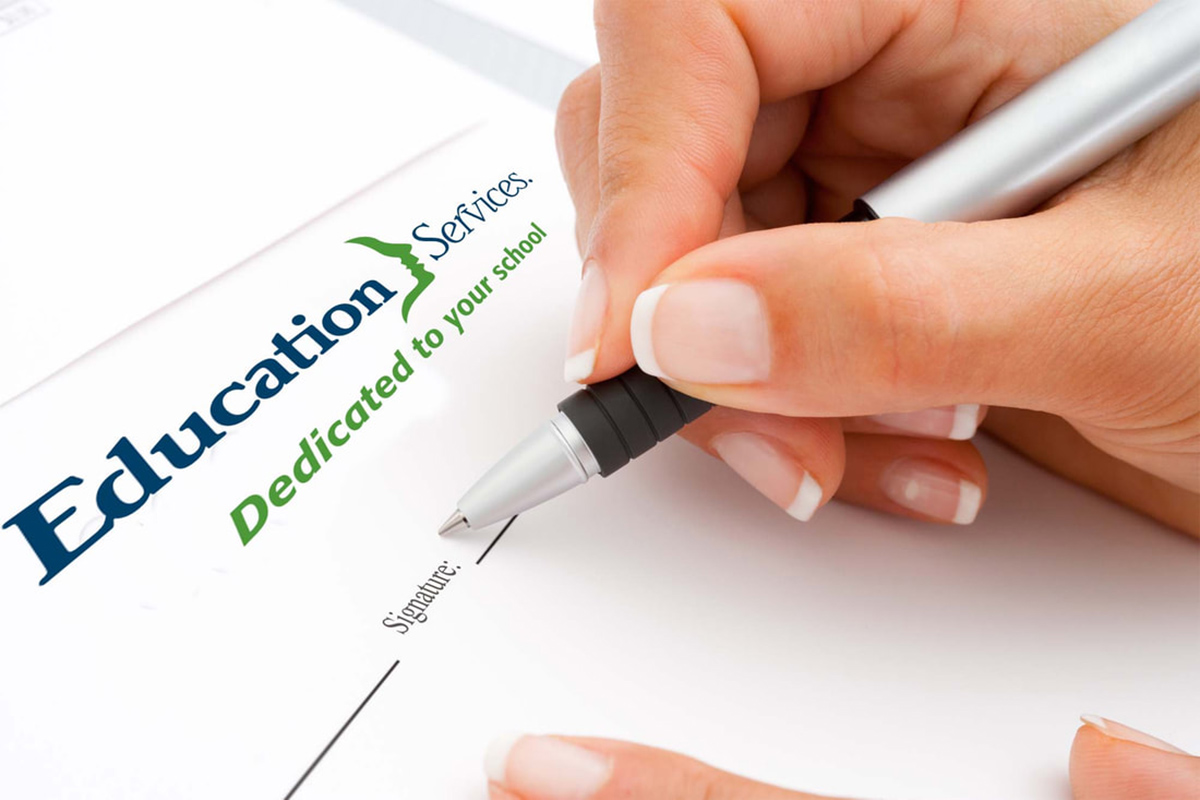

Finance
How Does Financial Education Services Work
Modified: January 5, 2024
Learn how Financial Education Services work and improve your financial knowledge with our comprehensive finance solutions. Start your journey to financial success today.
(Many of the links in this article redirect to a specific reviewed product. Your purchase of these products through affiliate links helps to generate commission for LiveWell, at no extra cost. Learn more)
Table of Contents
- Introduction
- What are Financial Education Services?
- Benefits of Financial Education Services
- How Does Financial Education Services Work?
- Step 1: Assessing Financial Knowledge and Goals
- Step 2: Tailored Financial Education Programs
- Step 3: Interactive Learning Tools and Resources
- Step 4: Personalized Guidance and Support
- Step 5: Tracking Progress and Results
- Conclusion
Introduction
In today’s complex financial landscape, it is crucial to have a strong understanding of personal finance and money management. However, many individuals feel overwhelmed and uncertain when it comes to making financial decisions. This is where financial education services come into play.
Financial education services, often provided by reputable institutions or organizations, aim to empower individuals with the knowledge and skills needed to make informed financial decisions. These services cover a wide range of topics, including budgeting, saving, investing, debt management, and retirement planning.
Whether you are a young adult just starting your financial journey or an experienced professional looking to improve your financial literacy, financial education services can be an invaluable resource. They offer comprehensive programs and resources designed to equip individuals with the tools they need to achieve financial well-being.
In this article, we will explore the benefits of financial education services and how they work. We will delve into the step-by-step process involved in these services, highlighting the various components and strategies utilized to enhance financial knowledge and empower individuals to take greater control of their financial lives.
By understanding the inner workings of financial education services, you can gain insight into how they can positively impact your financial future and ultimately improve your overall financial well-being.
What are Financial Education Services?
Financial education services refer to programs and resources that are designed to educate individuals about various aspects of personal finance. These services are offered by institutions, such as banks, financial institutions, non-profit organizations, and government agencies, with the goal of improving financial literacy and empowering individuals to make informed financial decisions.
Financial education services cover a wide range of topics, including budgeting, saving, investing, debt management, credit management, insurance, retirement planning, and more. They aim to equip individuals with the knowledge and skills necessary to navigate the complexities of the financial world and achieve their financial goals.
These services may be offered through workshops, seminars, online courses, one-on-one counseling sessions, or a combination of these formats. They are typically tailored to meet the needs of different demographics, such as students, young adults, families, or retirees. Some financial education services are offered for free, while others may require a fee or subscription.
The content of financial education services can vary depending on the provider and the target audience. It may include basic financial concepts, such as understanding income, expenses, and savings, as well as more advanced topics like investment strategies or estate planning.
Financial education services aim to build financial literacy by providing individuals with valuable information, tools, and resources. They aim to foster responsible financial behavior, promote good money management habits, and help individuals develop long-term financial strategies.
Ultimately, the goal of financial education services is to empower individuals to make informed financial decisions, overcome financial challenges, and achieve financial well-being. By equipping individuals with the necessary knowledge and skills, financial education services contribute to a more financially literate and resilient society.
Benefits of Financial Education Services
Financial education services offer numerous benefits for individuals seeking to improve their financial well-being. Let’s explore some of the key advantages of participating in these programs:
1. Improved Financial Knowledge: Financial education services provide individuals with a solid foundation of financial knowledge. Participants gain a better understanding of budgeting, saving, investing, and other key financial concepts, enabling them to make more informed decisions about their money.
2. Enhanced Money Management Skills: These services focus on building practical money management skills. Participants learn how to create and stick to a budget, track expenses, manage debt effectively, and develop positive financial habits.
3. Increased Financial Confidence: Financial education services empower individuals to take control of their finances. By providing the tools and knowledge needed to make sound financial decisions, these services instill a sense of confidence and competence in managing money.
4. Improved Financial Decision-Making: With a deeper understanding of personal finance, individuals can make better financial decisions. They can evaluate investment opportunities, assess various financial products and services, and choose the options that align with their goals and values.
5. Debt Reduction and Management: Many financial education services offer guidance on how to manage and reduce debt. Participants learn effective debt repayment strategies, negotiation techniques, and debt consolidation methods, helping them regain control over their financial obligations.
6. Improved Savings Habits: Financial education services emphasize the importance of saving for both short-term and long-term goals. Participants learn how to set achievable savings targets, establish emergency funds, and explore various savings vehicles to grow their wealth.
7. Retirement Planning: These services often include retirement planning resources and tools. Participants gain insights on retirement savings strategies, investment options, pension plans, and social security benefits, enabling them to plan for a financially secure future.
8. Financial Security: Ultimately, financial education services contribute to greater financial security. Participants gain knowledge and skills that can help them overcome financial challenges, weather economic downturns, and adapt to changing circumstances in their personal and professional lives.
By taking advantage of financial education services, individuals can reap these benefits and achieve a stronger financial foundation, greater peace of mind, and increased financial well-being.
How Does Financial Education Services Work?
Financial education services typically follow a structured process to provide individuals with the knowledge and resources they need to improve their financial literacy and make informed decisions. Let’s explore the step-by-step approach often taken by these services:
Step 1: Assessing Financial Knowledge and Goals: The first step in financial education services is to assess an individual’s existing financial knowledge and goals. This can be done through self-assessment questionnaires, interviews, or online assessments. Understanding the individual’s starting point and desired outcomes helps tailor the program to their specific needs.
Step 2: Tailored Financial Education Programs: Based on the assessment, financial education services develop customized programs for participants. These programs may cover a wide range of topics, including budgeting, saving, investing, debt management, credit repair, and retirement planning. The content is designed to address the specific needs and goals identified in the assessment phase.
Step 3: Interactive Learning Tools and Resources: Financial education services provide participants with a variety of interactive learning tools and resources. These may include online courses, workshops, webinars, e-books, videos, and educational materials. These resources are designed to engage individuals and facilitate their understanding of complex financial concepts.
Step 4: Personalized Guidance and Support: Many financial education services offer personalized guidance and support to participants. This can include one-on-one counseling sessions, financial coaching, or access to financial experts who can provide guidance and answer questions. This personalized approach ensures that participants receive individualized attention and support throughout their financial education journey.
Step 5: Tracking Progress and Results: Financial education services often track the progress and results of participants. This can be done through follow-up assessments, surveys, or progress reports. Tracking progress helps individuals see their growth and identify areas where further improvement may be needed.
Continued Learning and Support: Financial education services also emphasize the importance of continued learning and support. They may provide access to online communities, forums, or alumni networks where participants can connect with others on a similar financial journey. Ongoing support helps individuals stay motivated and continue to build upon their knowledge and skills.
It’s important to note that the structure and approach of financial education services can vary depending on the provider and the specific program. However, the overall goal remains the same: to empower individuals with the knowledge, skills, and resources necessary to make informed financial decisions and achieve their financial goals.
Step 1: Assessing Financial Knowledge and Goals
The first step in financial education services is to assess an individual’s current financial knowledge and goals. This crucial step allows the service provider to gain insights into the individual’s understanding of personal finance and their specific financial objectives. The assessment process helps tailor the financial education program to the individual’s unique needs and enhance its effectiveness.
There are various methods used to assess financial knowledge and goals, depending on the specific financial education service. These methods may include:
1. Self-Assessment Questionnaires: Individuals are often asked to complete self-assessment questionnaires that cover a range of financial topics. These questionnaires may gauge knowledge on budgeting, saving, debt management, investment concepts, insurance, and retirement planning. Participants can rate their comfort level and understanding of each topic to provide a comprehensive assessment of their financial knowledge.
2. Interviews or Consultations: In some cases, individuals may have in-depth consultations or interviews with financial experts or counselors. These sessions enable the service provider to ask specific questions and gather detailed information about the individual’s financial situation, goals, and any challenges they may be facing.
3. Online Assessments: Online assessments are increasingly popular for evaluating financial knowledge and goals. These assessments often consist of multiple-choice questions or interactive quizzes designed to measure an individual’s understanding of various financial concepts.
Once the assessment is complete, financial education services providers can use the gathered information to develop a personalized program that addresses the individual’s knowledge gaps and aligns with their financial goals. The assessment results also serve as a benchmark to measure progress throughout the program.
By assessing financial knowledge and goals, financial education services ensure that the program content is relevant and tailored to the individual’s needs. This personalized approach increases the effectiveness of the program and allows participants to focus on areas where they need the most support. It also helps participants set realistic and achievable financial goals, guiding them towards a path of financial success.
Step 2: Tailored Financial Education Programs
Once the assessment of an individual’s financial knowledge and goals is complete, financial education services proceed to develop tailored programs that meet the specific needs identified in the assessment phase. This step ensures that individuals receive targeted education and resources that align with their unique circumstances and objectives.
Here are some key elements involved in creating tailored financial education programs:
Content Selection: Based on the assessment results, the service provider selects the appropriate content and topics to include in the program. This can range from foundational financial concepts, such as budgeting and saving, to more advanced subjects like investment strategies or retirement planning.
Adaptation to Different Learning Styles: Financial education programs are designed to cater to diverse learning styles. They may include a combination of visual aids, interactive exercises, case studies, real-life examples, and practical applications to ensure participants can engage and absorb the information effectively.
Targeted Delivery Methods: Different delivery methods are employed to suit the needs and preferences of participants. These can include in-person workshops, online courses, webinars, downloadable resources, or a combination of these formats. Offering flexibility in delivery encourages participants to engage with the content in a way that best fits their schedule and learning style.
Participant Engagement: Programs are designed to actively engage participants and facilitate their learning experience. This may involve interactive activities, group discussions, quizzes, or assignments to reinforce understanding and encourage participation.
Progression and Adaptation: Financial education programs are often structured in a progressive manner, starting with foundational concepts and gradually building upon them. This allows participants to develop a solid understanding of the fundamentals before delving into more advanced topics. Additionally, programs may be adapted based on participant feedback, ensuring continuous improvement and relevance.
Tailored financial education programs ensure that participants receive the knowledge and skills they need to address their specific financial challenges and goals. By providing personalized content and delivery methods, these programs enhance the learning experience and increase the likelihood of applying the acquired knowledge to real-life financial situations. The ultimate goal is to empower individuals to take control of their financial futures and make informed decisions that lead to financial well-being.
Step 3: Interactive Learning Tools and Resources
In order to make the financial education experience engaging and effective, financial education services provide a variety of interactive learning tools and resources. These tools are designed to enhance understanding, promote active participation, and facilitate the application of knowledge in real-life financial situations. Here are some common examples of interactive learning tools and resources:
Online Courses and Webinars: Financial education services often offer online courses and webinars covering various financial topics. These interactive platforms allow participants to learn at their own pace, engage with multimedia content, and interact with instructors and peers through discussion boards and live Q&A sessions.
Financial Simulations: Simulations are designed to replicate real-world financial scenarios and allow participants to practice making financial decisions in a risk-free environment. These interactive exercises promote critical thinking, problem-solving, and decision-making skills, helping participants develop confidence in their financial abilities.
Budgeting and Expense Tracking Tools: Financial education services may provide participants with online tools or mobile apps that simplify the process of budgeting and tracking expenses. These interactive tools enable individuals to create personalized budgets, set savings goals, and monitor their spending habits in real-time.
Calculators and Financial Planning Tools: Interactive calculators and financial planning tools help individuals assess their current financial situation, plan for future goals, and make informed decisions. These tools can assist with retirement planning, loan repayment calculations, investment projections, and more.
Quizzes and Assessments: Regular quizzes and assessments allow participants to test their knowledge, reinforce learning, and track their progress. These interactive assessments encourage active participation and provide immediate feedback, helping individuals identify areas where additional focus may be needed.
Case Studies and Real-Life Examples: Case studies and real-life examples are used to demonstrate how financial concepts and strategies apply in practical situations. By analyzing these examples, participants can gain valuable insights and learn how to navigate common financial challenges.
By incorporating interactive learning tools and resources, financial education services aim to make the learning experience more engaging, practical, and effective. These tools allow participants to actively participate in their financial education, apply their knowledge in relevant scenarios, and gain the confidence and skills needed to make informed financial decisions.
Step 4: Personalized Guidance and Support
One of the key elements of effective financial education services is the provision of personalized guidance and support. This step ensures that participants have access to individualized assistance throughout their financial education journey. Here are some ways in which personalized guidance and support are offered:
One-on-One Counseling: Financial education services may provide participants with one-on-one counseling sessions with financial experts or counselors. These sessions allow individuals to discuss their specific financial concerns, receive personalized advice, and address any questions or challenges they may encounter.
Financial Coaching: Financial coaching is a form of personalized support where a trained professional guides participants in developing practical financial skills and strategies. Coaches help individuals set financial goals, create action plans, and provide ongoing accountability and support.
Group Workshops and Discussions: Although not strictly personalized, group workshops and discussions within financial education programs provide participants with opportunities to interact and learn from each other. These sessions allow individuals to share their experiences, ask questions, and gain insights from peers facing similar financial challenges.
Access to Financial Experts: Financial education services may offer access to financial experts or subject matter specialists who can provide guidance and answer questions relating to specific financial topics. This access allows participants to seek expert advice to address their unique financial circumstances and goals.
Resource Recommendations: Personalized guidance extends to recommending relevant resources to participants. This can include suggested readings, online tools and calculators, reputable websites, and other educational materials that align with an individual’s financial goals and areas of interest.
Progress Tracking: Financial education services often employ systems or tools that allow individuals to track their progress throughout the program. This tracking can include monitoring financial goals, tracking improvements in financial habits, and quantifying the impact of the education received.
Personalized guidance and support are vital components of financial education services as they provide participants with the individual attention and assistance they need to navigate their unique financial situations. By offering personalized guidance, financial education services ensure that participants receive relevant advice, practical solutions, and ongoing support to help them achieve their financial goals.
Step 5: Tracking Progress and Results
In the final step of financial education services, tracking progress and results is crucial to evaluating the effectiveness of the program and ensuring that participants are making meaningful strides towards their financial goals. This step involves monitoring and measuring the progress and outcomes of individuals as they apply the knowledge and skills gained from the program. Here’s how progress and results are typically tracked:
Follow-Up Assessments: Financial education services may conduct follow-up assessments to evaluate participants’ knowledge retention and improvement. These assessments can take the form of quizzes, surveys, or interviews to gauge the extent to which participants have internalized and applied the financial concepts and strategies covered in the program.
Surveys and Feedback: Surveys and feedback forms are often used to collect participants’ opinions, perceptions, and suggestions about the program. Feedback is valuable in identifying areas of improvement, assessing participant satisfaction, and incorporating suggestions for enhancing the program’s effectiveness.
Goal Achievement Measurement: Participants’ progress towards their financial goals is tracked and measured throughout the program. This can be done through goal-setting exercises, regular check-ins, or progress tracking tools. By monitoring goal achievement, participants can see tangible results and gain motivation to continue their financial journey.
Financial Metrics and Indicators: Some financial education services use financial metrics and indicators to measure participants’ financial health and progress. This can involve tracking changes in savings rates, reductions in debt, improvements in credit scores, or increases in investment portfolios. These metrics provide concrete evidence of the program’s impact on participants’ financial well-being.
Qualitative Feedback: In addition to quantitative measures, qualitative feedback is also sought from participants. This can involve gathering testimonials or success stories that highlight the positive impact of the financial education program on participants’ lives. Qualitative feedback provides valuable insights into how the program has influenced participants’ financial behaviors and decision-making.
Tracking progress and results allows financial education services to assess the effectiveness of their programs, identify areas for improvement, and make necessary adjustments. By capturing data and feedback on participants’ progress, financial education services can iteratively enhance their offerings to better meet the needs and goals of future participants.
In summary, by systematically tracking progress and results, financial education services can ensure the ongoing success and improvement of their programs, ultimately leading to greater financial empowerment and well-being for individuals who participate in these services.
Conclusion
Financial education services play a crucial role in equipping individuals with the knowledge and skills they need to navigate the complex world of personal finance. By offering tailored programs, interactive learning tools, personalized guidance, and progress tracking, these services empower individuals to make informed financial decisions and work towards their financial goals.
Through the assessment of participants’ financial knowledge and goals, financial education services can customize the content and delivery methods to meet the specific needs of each individual. This personalized approach ensures that participants receive relevant and targeted education that is applicable to their unique financial situations.
The integration of interactive learning tools and resources fosters an engaging learning experience, allowing participants to actively participate in their financial education. From online courses and webinars to simulations and calculators, these tools enhance individuals’ understanding of financial concepts and promote the practical application of knowledge.
Moreover, personalized guidance and support provide participants with the individual attention they need to address their financial challenges and achieve their goals. Whether it’s one-on-one counseling, financial coaching, or access to experts, participants can receive tailored advice and assistance throughout their financial education journey.
By tracking progress and results, financial education services can measure the impact of their programs and continually refine them for improved effectiveness. Assessments, surveys, and goal achievement measurements help evaluate participants’ knowledge retention, financial growth, and overall satisfaction with the program.
In conclusion, financial education services are invaluable resources in building financial literacy, improving money management skills, and empowering individuals to take control of their financial futures. They provide a structured approach to learning, support, and guidance, enabling individuals to navigate the complexities of personal finance and achieve their financial goals. By investing in financial education, individuals can gain the knowledge and confidence needed to make informed decisions, overcome financial challenges, and ultimately strive for long-term financial well-being.














